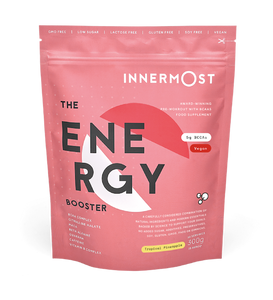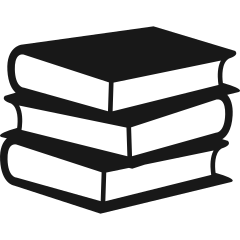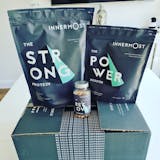Ever looked in the mirror and suddenly noticed something about your body that had never occurred to you before? Us too.
Hip dips, sometimes known as violin hips, are the gentle inward curves found just below your hips and above your thighs - and it’s the latest body part to be the target of online obsession. Google searches asking what hip dips are and how to get rid of them have soared in recent months, so if you’ve found yourself searching ‘how to get rid of hip dips’ after midnight, you’re definitely not alone.
You may have read that hip dips are a cause for worry, can be changed through exercise or are bad. This is absolutely untrue. We’re here to give you the lowdown.
What are hip dips?
Hip dips, or violin hips, are nothing more than a naturally occurring indentation that may exist between your thighs and your hips. Some people’s hips have them and some don’t - and it’s an inherent part of your skeleton and biology.
Whether or not you’re blessed with hip dips depends on the shape of your hip bones. Some people’s body shape means that they have more visible hip dips than others. They’re a completely normal part of your body structure caused by the naturally inward-facing curves formed by the shape of your pelvis. They’re not created by being unhealthy, overweight or underweight - although having a higher level of body fat or muscle mass can make them more pronounced.
How to get rid of hip dip
The presence of hip dips is down to the shape of your bones, and they can’t be exercised or dieted away. While some people may find that they become smaller when they reduce body fat and increase muscle mass, there’s no guarantee that this will happen. Plus, if you focus too much on or avoid exercises that work your hip flexors and quads in favour of working on your glutes so as to avoid targeting the dips, you risk injuries from overworking certain body parts and neglecting others.
More important is the mental impact of worrying about such things. Negative self-talk about body image and dissatisfaction with the way you look can affect your mental health and your self-image. The rhetoric that naturally occurring body parts look bad or should be exercised away is exceptionally negative - it’s like calling the fact that you have two arms a ‘problem area’.
Hip dip exercises
A quick social media search reveals that thousands of people online are obsessed with the shape of their hips. Before and after photos, which are almost certainly airbrushed, abound, and there are plenty of videos and tutorials promising to get rid of hip dips for good. There’s even the extreme option of hip dip surgery.
This narrative of supposed self-improvement and obsessively focusing on an impossible-to-change body part could lead to body dysmorphia or eating disorders. This could present as exercising obsessively, restricting food intake, binging and purging and being generally chronically unhappy with the way that you look. Focus on loving your body, staying healthy and strong and putting your energy into what you can change, rather than feeling negative about what you can’t.
It’s a good idea to focus on strengthening your lower body as an entire entity, which will increase your power during workouts, help to stabilise your core and empower you in your everyday life. Incorporating exercises such as lunges, squats and glute bridges into your workout will help to kick your lower body into action and targets all of the muscles in your legs and hips, rather than trying to ineffectively spot-reduce one body part (which we all know never works how we want it to). Tools such as resistance bands and yoga mats will support you in this and make your workouts more effective.
Hip dips are amazing!
Thankfully, there is another way to think about hip dips. There’s a growing movement of hip dip positivity online, rehabilitating the message around this maligned body part and disabusing the notion that there’s any such thing as an ideal body. Your focus should always be on health and balance rather than perfection.
Instagram user @aubreyalyssa summed this attitude up in a post. ‘I've struggled with comparing myself to other women my entire life, and after starting my fitness journey it's no different,’ she said. ‘I will never have the "perfect" body according to society. But I'm learning to love the body I have! Big quads and hip dips! That's not going to change, so might as well embrace it.’
If you’re struggling with loving and accepting your body, Innermost recommends engaging in activities that bring you more in touch with your physicality such as yoga and meditation, and talking through your feelings with friends or a mental health professional.























